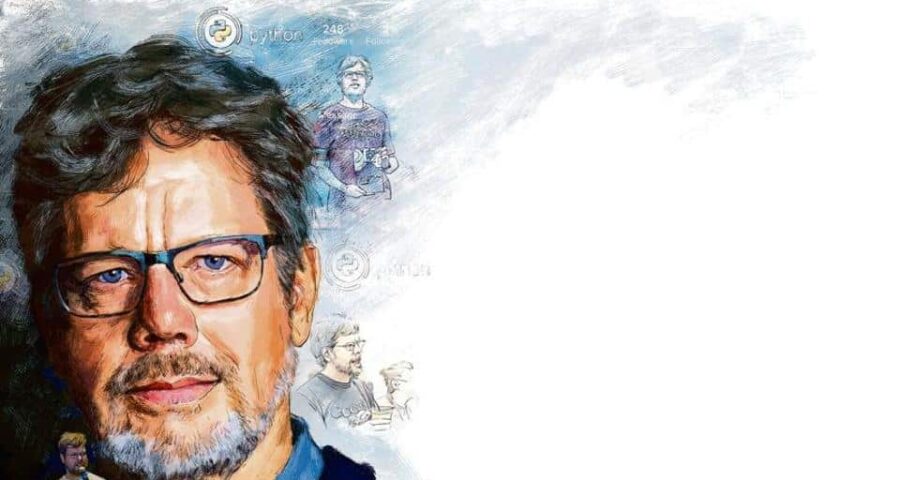Born on January 31, 1956 in Haarlem, Netherlands, Guido van Rossum was the son of an architect, his father and mother, who was a schoolteacher.
His brother, who was a type designer and programmer, went on to design the typeface used in the Python Powered logo.
Educational endeavours
During his childhood, Van Rossum received an electronics kit probably on his 10th birthday and became an electronics hobbyist while still in high school.
He was good at designing circuits rather than at soldering and gradually began designing more complicated digital circuits, which became his main hobby.
Van Rossum attended the University of Amsterdam where he obtained a master’s degree in mathematics and computer science in 1982.
Career
Van Rossum worked with various research institutes, both in his homeland and in the US. These included the Corporation for National Research Initiatives (CNRI), the US National Institute of Standards and Technology (NIST) and the Centrum Wiskunde and Informatica (CWI) in the Netherlands.
During his tenure at the CWI, in 1986, Van Rossum wrote and contributed a glob() routine to BSD Unix. In the mid-1980s, while at the CWI, he worked for several years on the ABC system that was developed by Leo Geurts, Steven Pemberton, and Lambert Meertens. He joined Zope Corporation in 2000 and worked there till 2003. Thereafter, he began serving Elemental Security, where he worked on a custom programming language. In 2005, he was offered a job by Google where he worked till December 2012.
Python
Van Rossum developed the open-source language Python in 1991. It was designed as an easy-to-use language, with features such as using indentation instead of brackets to group statements. Python is also a very compact language, designed so that complex jobs can be executed with only a few statements. During the 2010s, Python became one of the most popular programming languages, along with Java and JavaScript.
In December 1989, Van Rossum had been looking for a “hobby’ programming project that would keep him occupied during the week around Christmas as his office was closed when he decided to write an interpreter for a new scripting language he had been thinking about a descendant of ABC that would appeal to Unix/C hackers. He has explained that Python’s predecessor, ABC, was inspired by SETL, noting that ABC co-developer Lambert Meertens had spent a year with the SETL group at NYU before coming up with the final ABC design. In July 2018, Van Rossum announced that he would step down from the position of BDFL of the Python programming language.
Personal life
Van Rossum married Kim Knapp in 2000 and the couple have a son named Orlijn Michiel Knapp-van Rossum.Van Rossum lives in Belmont, California, with his family.
Awards and recognition
Guido Van Rossum won the Award for the Advancement of Free Software among other honours and accolades. In 2003, he received a NLUUG Award. In 2006, he was recognised as a Distinguished Engineer by the Association for Computing Machinery. In 2018, he was made a Fellow of the Computer History Museum. In 2019, he was conferred the honorary title of Dijkstra Fellow by CWI.
INTERESTING FACTS
1. Guido Van Rossum said that he had derived the name Python from the British sketch-comedy series Monty Python’s Flying Circus, of which he is a big fan. While deciding it, he was in a “slightly irreverent mood.”
2. The free extensible multi-platform web browser Grail, developed by the CNRI and written in the Python programming language, was his creation and named after Monty Python and the Holy Grail.
3. He wrote Internet Programming with Python (1996), with Aaron Watters and James C Ahlstrom; An Introduction to Python (2003); and The Python Language Reference Manual (2003).
4. On November 12, 2020, Guido Van Rossum announced that he was coming out of retirement to join the Developer Division at Microsoft. He tweeted: “I decided that retirement was boring and have joined the Developer Division at Microsoft. To do what? Too many options to say! But it’ll make using Python better for sure (and not just on Windows :-). There’s lots of open source here. Watch this space.’
(SOURCE: britannica.com, thefamouspeople.com, Wikipedia)
Source: Read Full Article

